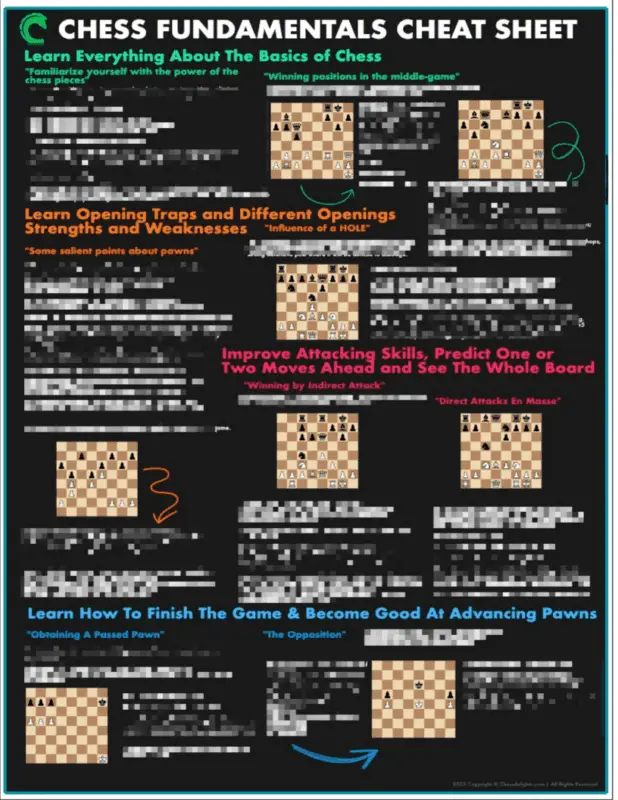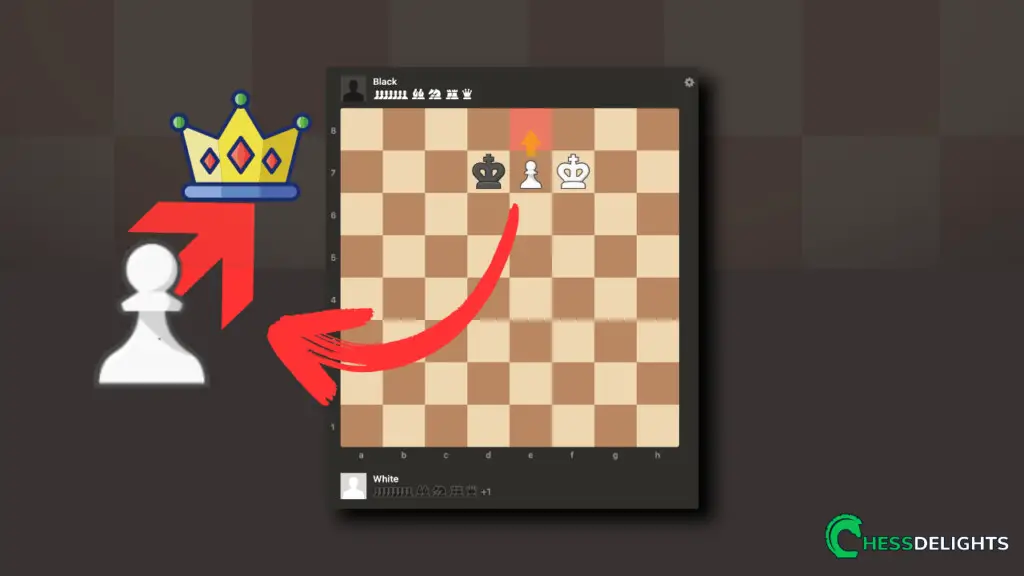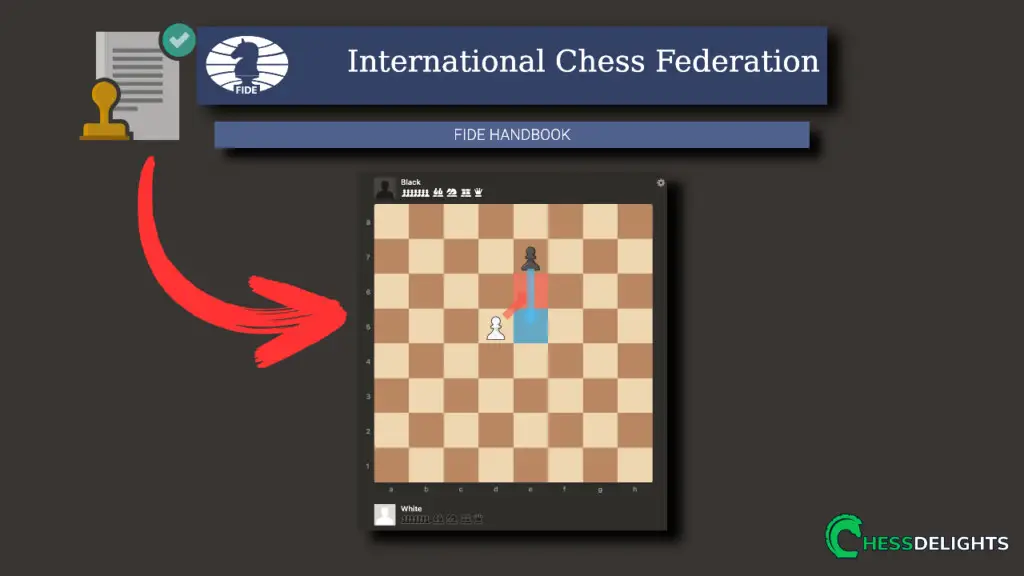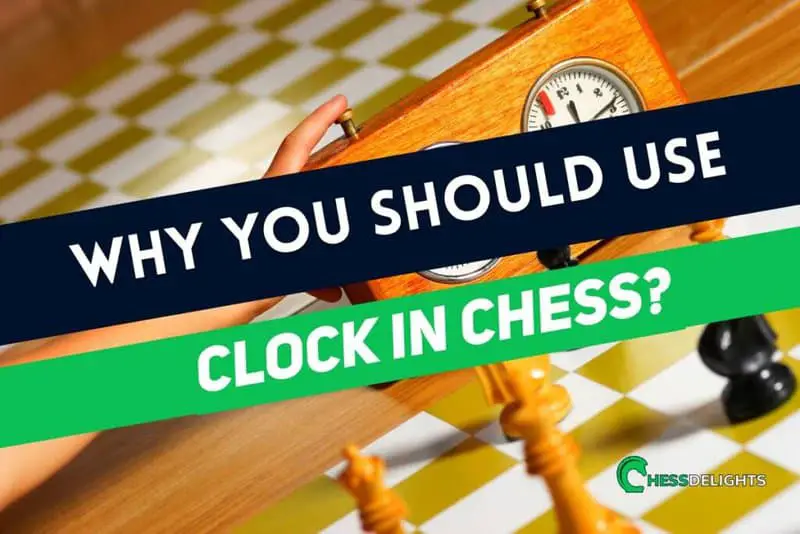If you are unfamiliar with chess pawn rules or regulations, particularly their special pawn moves like en passant, you risk finding yourself in a vulnerable situation.
En passant is a special pawn move that, if your opponent knows how to use it against you and you don't know what it is, will leave you either shocked or questioning if it is even a legal pawn move.
I recall playing a casual game of chess and I used the en passant move to capture his pawn and he was questioning how did that happened and if it’s legal – I explained what the move was and since it was just a casual game, he asked if he can change his move… 🙂
Changing moves is not legal, of course, but since it was just a fun game, I agreed… 🙂
But if you play online or against a computer, you have no chance to change your move.
So, in order to help you avoid mistakes and confusion, here’s a complete guide to chess pawn rules.
Table of Contents
How Does The Pawn Move In Chess

The pawn moves are rather simple to understand.
Here are the chess pawn rules you need to follow:
- First, all pawns can only move forward.
- Second, pawns capture diagonally; it can take a piece on the left or right side of the board sideways while moving forward. This is the only time that pawns can move sideways or diagonally.
- Third, you can decide to move your pawns one square or two squares forward from their initial starting position; after that, they can only move one square each time they move.
Here’s what you should remember:
- If you decide to move forward from the starting position by one square, its next moves will always be one square at a time.
- If you decide to move forward from the starting position by two squares, its next moves will always be one square at a time as well.
Now that you know how the pawn moves, let’s take a look at what you can’t do with pawns.
Chess Pawn Rules In Capturing Opponent's Piece
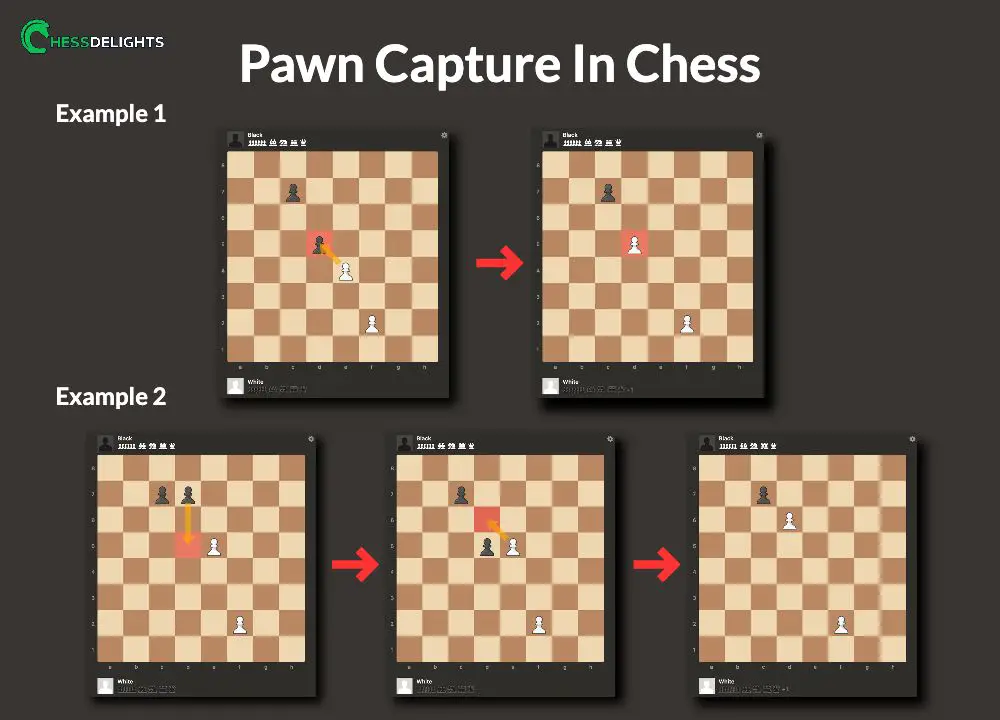
The pawn moves diagonally forward to capture an opponent's piece.
There are two rules by which a pawn can capture any chess piece on the board.
- A pawn can capture an opponent's piece if it occupies a diagonal square directly in front of it.
- A pawn can capture an opponent's piece by means of en passant. You'll learn more about en passant in the next section of this guide.
Here are the important things you need to remember with pawn capture:
- You cannot capture an opponent's king
- You cannot capture an opponent's piece if you're going to expose your king from check
- You cannot capture via en passant; if you make any other move before attempting to capture via en passant
Moves You Can’t Do With Pawns
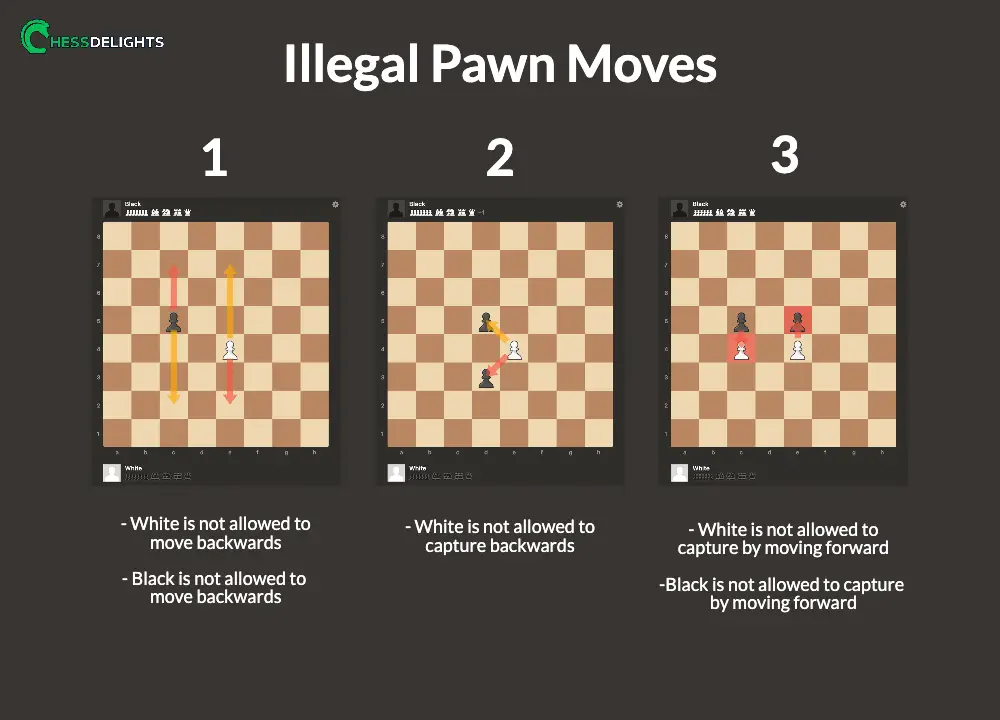
There are some chess pawn rules that are kind of weird, but we need to follow them, and the first thing is that:
- All pawns are not allowed to move backward.
- All pawns are not allowed to capture backwards.
- And pawns are not allowed to capture moving forward.
I said it’s weird because it’s the only piece that can’t move backwards.
Now that you know what you can’t do with pawns, it’s time to learn their special pawn moves and their rules.
Special Rules In Chess For Pawns
I think you’re now familiar with the special pawn move rule called en passant – which sometimes creates confusion in games where players don’t know what it is, and it’s their first time to see that move or they question if it’s even a legal chess move.
Let’s take a look at two special pawn rules that you may encounter in games offline or online.
- En passant
- Pawn Promotion
[snippet]
En Passant
En passant, which translates to “in passing,” is a special pawn rule in chess that allows a pawn to capture an opponent's pawn under certain conditions.
It can only occur immediately after an opponent moves their pawn two squares forward from its starting position. If your pawn is adjacent to the opponent's pawn and on its fifth rank, you have the option to capture the opponent's pawn as if it had only moved one square forward.
It is a unique rule that adds an interesting tactical element to the game of chess.
[/snippet]
Recommended Reading: If you want to read more about en passant and master it, check out this article for a complete chess en passant reference.
[snippet]
Pawn Promotion
Pawn promotion is another special rule in chess that allows a pawn, when it reaches the opponent's back rank, to be promoted to any other piece on the board except another pawn or a king.
This rule gives the player the opportunity to exchange their pawn for a more powerful piece like a queen, rook, bishop, or knight.
Pawn promotion is an important strategic move that can greatly impact the game by increasing the player's attacking capabilities and improving your chances of winning.
[/snippet]
Recommended Reading: If you want to read more about pawn promotion, check out this guide for a complete chess pawn promotion reference.
Pawn Structures
Understanding chess pawn rules is a good start when it comes to improving your game. The next logical step would be to learn about pawn structures.
What is a pawn structure? A pawn structure refers to the arrangement and positioning of pawns on the chessboard. It is an important aspect of chess strategy as it directly influences the dynamics and potential of the position. Understanding pawn structure can help you determine the strengths and weaknesses of the game.
You can greatly affect your opponent's plans and identify potential pawn breaks when you understand pawn structures.
Here are some general rules and principles regarding pawn structure:
- Pawn Chains: A pawn chain is a connected line of pawns that provides support and control over specific squares. It is generally advantageous to have pawn chains as they can restrict your opponent's pieces and create attacking opportunities.
- Pawn Islands: Pawn islands are groups of pawns that are not connected to each other. It is generally better to have fewer pawn islands as it provides better coordination and support among the pawns.
- Isolated Pawns: An isolated pawn is a pawn that has no friendly pawns on adjacent files. Isolated pawns can be vulnerable to attacks and can become weaknesses in your position. However, they can also provide potential outpost squares for your pieces.
- Doubled Pawns: Doubled pawns occur when two pawns of the same color are on the same file. Doubled pawns can restrict mobility and coordination, but they can also provide open lines for your pieces.
- Passed Pawns: A passed pawn is a pawn that has no opposing pawns to stop its advance to promotion. Passed pawns can be very powerful and can become a major strategic asset in the endgame.
Useful External Resource: If you want to read more about pawn structures, check out this article from chess.com about pawn structures.
Frequently Asked Questions
Can Pawns Move Diagonally Without Capturing?
Pawns cannot move diagonally without capturing; they can only move forward and capture diagonally. Don't be confused with capturing and moving the pawn forward.
Can Every Pawn Move Two Spaces?
Every pawn in chess has the ability to move two spaces forward on its initial move or its starting position. After those initial two moves, they can only move one space each time.
Note: Moving two spaces in the initial move depends on your tactics or strategy.
How Does A Pawn Become A Queen In Chess?
A pawn can become a queen in chess by reaching the opposite end of the board from its starting position. Once a pawn reaches the eighth rank, it can be promoted to any other piece except for the king and pawn.
How Can A Pawn Capture On Its First Move?
Pawns can move one or two spaces forward and capture diagonally. However, whether a pawn can make a capture on its first move depends on the situation.
For instance, if a chess piece is positioned near the pawn in its initial position and the first move the pawn can make is to capture that piece, then yes, the pawn can capture on its first move if there is an opponent's piece present.
Hope you enjoyed this guide!
Have fun learning chess!
Essential Chess Resources: Let's take your learning to the next level by checking out our recommended chess resources.
